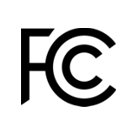Why FCC Compliance Is Important for an LED Sign
The Federal Communications Commission regulates devices that emit radio waves. Unregulated signs may cause interference with emergency services, traffic or train control systems, and other vital communication. The FCC has the authority to shut down non-compliant signs should they interfere with these systems. Be sure to protect your investment by working with a sign manufacturer that is FCC compliant!
-
All of our electronic signs are tested by an FCC-recognized, accredited laboratory.
Radio frequencies are analyzed to ensure that they are below an acceptable level.
Re-testing is required for all product changes and new products.
Operating an unregulated sign may cause harmful interference in your area.
Ensure that your new sign complies with FCC Part 15 standards.

Be sure that your outdoor LED sign is FCC compliant!
Why does this apply to LED signs?
Part 15 of the Federal Code of Regulations is used as a standard for the testing of most electronic equipment and devices capable of emitting radio waves. This part of the code outlines technical specifications, administrative requirements, and marketing of items ranging from cordless telephones to security systems. As an electronic device, these rules also apply to LED signs. Unregulated signs may cause interference with emergency services, traffic and train control systems, and other vital communication.
How does the certification process work?
Electronic products, including LED signs governed by FCC Part 15, must be either certified or authorized under the Supplier's Declaration of Conformity (SDoC). Both processes require the manufacturer of the product to submit detailed information to ensure that it meets the appropriate technical standards. The certification process is rigorous, and sign manufacturers must have their components tested by an FCC-recognized, accredited laboratory.
What can happen if a sign isn't FCC compliant?
If an LED sign isn't FCC certified, there is no assurance that it meets federal safety regulations or technical standards. By operating an unregulated sign, you may cause harmful interference with radio communications in your area. The FCC has the authority to shut down non-compliant signs.
In February 2019, the FCC issued an enforcement advisory regarding LED signage that violates FCC regulations. The warning reviewed the fact that companies advertising, selling, or leasing LED signs must ensure that their components are authorized or certified according to Part 15 standards. The advisory also reminded companies that they must label LED boards properly and keep a copy of their compliance statements.
If sign companies are not compliant, they can incur fines of $20,134.00 per day and up to $151,005.00. Note that these penalties are for the company that sold the sign, not for the organization that purchased it. When a company is cutting corners in one area of their business, chances are greater that they are doing the same in other areas, such as a UL listing. Non-compliant signage tends to be made with subpar materials or haphazardly manufactured.
Beyond that, if the company you purchase from goes out of business, your sign warranty and service agreement become compromised. To mitigate these risks, you should work with a sign manufacturer that has an established service record going back many years.
What can I do to ensure FCC compliance?
There are several steps that you can take to ensure the digital sign you are buying meets FCC Part 15 emissions guidelines. Below are some questions to ask the sign manufacturer. Reputable manufacturers will be happy to provide the information and education needed to ensure their digital sign product meets all FCC standards.
- What specific FCC rules govern your product, and how specifically have you complied with those rules?
- Do you fall under any exemptions as outlined in Title 47 Part 15.103?
- Can you provide the test report that shows that this exact model meets the requirements of Title 47 Sections 2.955, 15.105, 15.107, and 15.109?
- Was the equipment tested under normal operating conditions and in a state such as to cause maximum emissions as prescribed by FCC Part 15?
- Can you provide a photo of the label that meets the requirements of Title 47 Part 15.19?
At Stewart Signs, we opt-in to the most rigorous part of the FCC Part 15 certification process, and ensure that all of our LED signs meet current federal safety and compliance regulations. When you invest in a sign from Stewart Signs, you can be confident that you are receiving LED signage of the highest quality. Contact us to learn more about FCC compliant LED signs and to start your journey to a new sign.